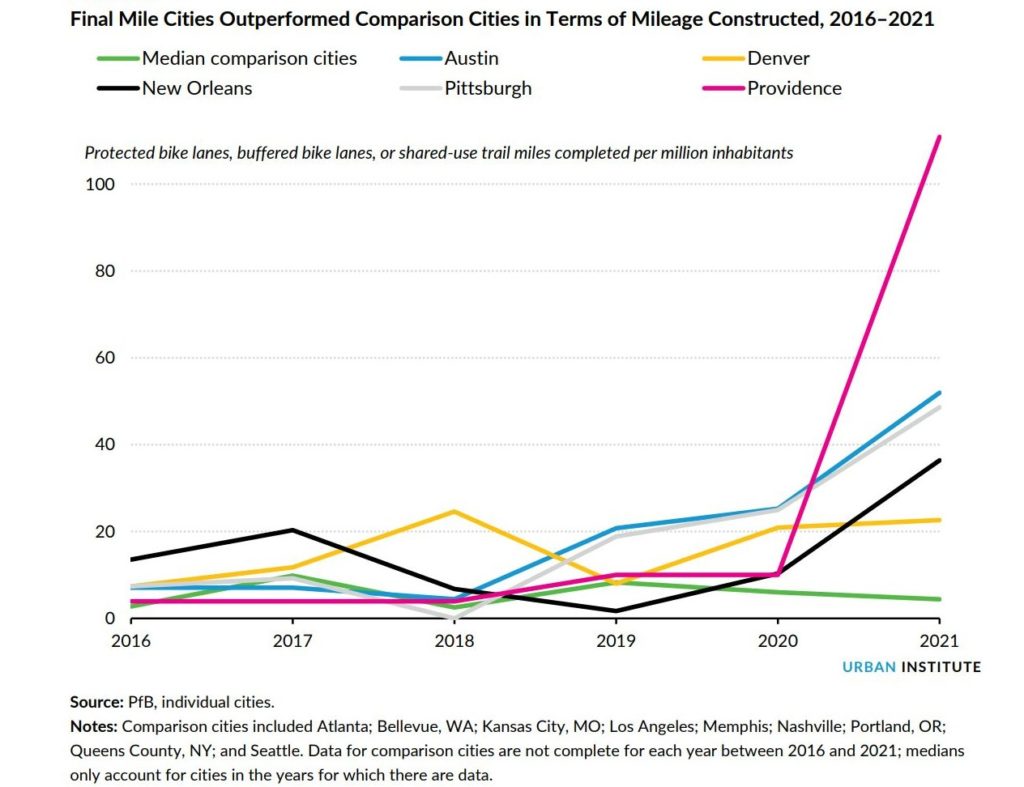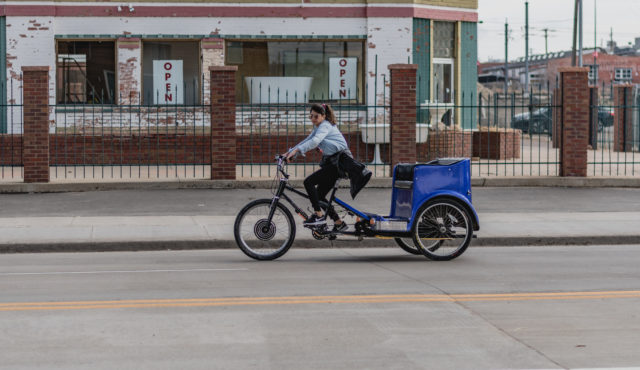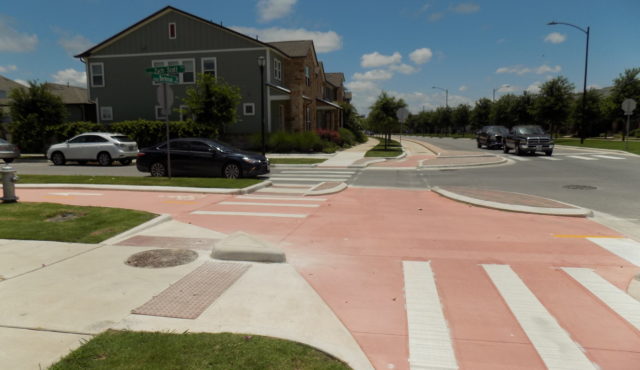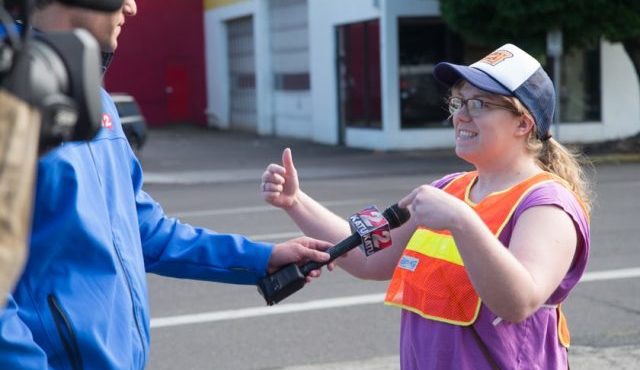As the active transportation movement grows in the United States, many cities have established policies to make their communities more bicycle friendly. Bringing those policies to life, however, is often a tall order. Whether it be funding challenges, limited staff, competing priorities, misaligned stakeholders—or all of the above—local governments face hurdles that can slow down the journey from concept to reality. Toole Design recently helped speed up that journey in five cities: Austin, Denver, New Orleans, Pittsburgh, and Providence.
The Final Mile Bicycle Infrastructure Program, created and managed by PeopleForBikes (PfB), invested over $10 million in these five cities to accelerate the construction of mobility networks between 2019 and 2021. More than a funding initiative, the Final Mile program included organizational guidance and a robust and engaging marketing campaign to help local governments and advocacy groups build productive partnerships. Toole Design’s role in the program was to provide engineering and planning expertise to supplement local staff capacity.
To measure the success of these five Final Mile projects, the Urban Institute recently conducted an analysis and released a research report: Making the Case for Improved Bicycling Infrastructure. The report highlights three key elements in PfB’s theory of change: ambitious mileage goals, city accountability, and engineering assistance from consultants. As part of the third element, Toole Design staff added capacity and expertise that, according to the report, were essential in bringing these projects to fruition.
At the start of the program, the five Final Mile cities were in varying states of progress on bicycling infrastructure and future bikeway planning. Austin and Denver had bike plans and substantial funding already in place and were actively implementing projects, so PfB’s role was to coordinate key players across government and non-profit groups to help facilitate the process. In these cities, the program’s influence led to more unity to accelerate projects and make bold decisions. (Learn more about the Austin project by watching this PfB video.) The other three Final Mile cities faced more limited resources. As the Urban Institute report states, “Toole filled a capacity gap for local officials, especially for the relatively less-funded local governments in New Orleans, Pittsburgh, and Providence.” In these cities, we worked closely with local staff to develop bike plans, produce cost estimates, and ultimately produce engineering plans for the network.
In the case of Providence, the team found quick and efficient ways to create a more walkable and bikeable urban environment. This involved revamping the site of a previously removed highway ramp and calming a stretch of road with a reputation for drag racing. Project Manager Lucy Gibson commended City staff for managing so many projects and for taking an approach that would have the most immediate impact for residents: “It was less important that we do the absolute perfect thing and more important that we get a low-stress network out quickly,” said Gibson. “Then there’s a foundation to add to and improve upon in the future.” By taking a lean approach, Providence made remarkable progress on a high-comfort, low-stress bicycle network and built momentum for much more to come. (Take a look at these striking before-and-after photos of Chestnut Street in 2011, before the highway was removed, and that same street in 2022.)

Of the five Final Mile cities, New Orleans faced the most difficult challenges. While there was tremendous vision and support from Mayor LaToya Cantrell and City staff, there was no formal bikeway network plan in place. The City needed a roadmap to meet its ambitious goal of building 75 miles of bikeways in two years. Toole Design stepped in to help with both the planning and engineering of the network. Our team developed a methodical and equity-centered approach—informed by data and public input—to identify a network of more than 550 miles and to determine which 75 miles to prioritize. Project Manager Adam Wood explained, “We created a demographic index to prioritize neighborhoods with above average densities of people of color, households with low incomes, zero-car households, and households with people under the age of 18 and over the age of 65.” The data-informed prioritization process—in combination with audacious City leadership and strong partnerships among communities, advocates, and City staff—set the stage for an impressive amount of bikeway construction in record time. (Check out this video from PfB to see more about the process, partnerships, and outcomes in New Orleans.)
The Final Mile program not only led to faster implementation; it also led to bigger thinking. A network-level mindset replaced what had previously been an ad hoc approach to bicycling infrastructure. As the Urban Institute report notes, “Though Toole’s involvement did not displace local decisionmaking, it did serve as a mechanism to better conceptualize bike infrastructure as a network, rather than a corridor-by-corridor program.” Instead of tackling a single stretch at a time, the Final Mile cities are looking at the big picture and creating connectivity across a full system.
While the Final Mile program was a finite initiative in just a handful of cities, the lessons we can take from it are clear: ambitious goals + technical expertise + productive relationships = better bikeways in less time.


